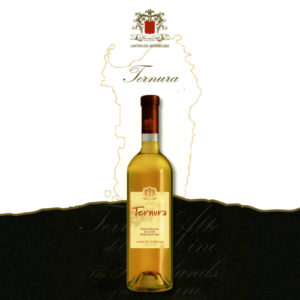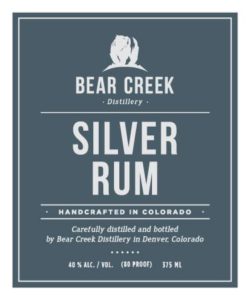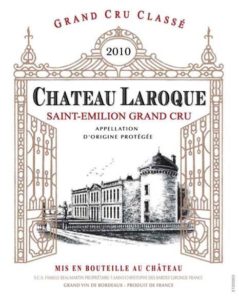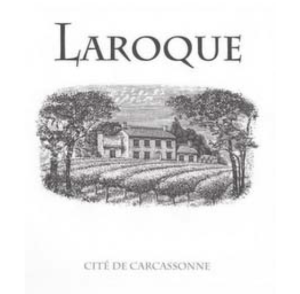The USPTO Trademark Trial and Appeals Board (“TTAB”) recently issued three relevant decisions to the wine, beer, and spirits industries. The decisions are summarized below.
 In re El Galan, Inc., Serial No. 86961428 (February 1, 2018) [not precedential]: El Galan, Inc. (“Applicant”) sought registration of the mark TERNURA in standard characters for “cigars” in International Class 34. Originally, the Trademark Examining Attorney refused registration under Section 2(d) of the Trademark Act for likelihood of confusion with the registered mark TERNURA for “liquor; tequila, vodka; wines” in International Class 33. Applicant appealed to the USPTO TTAB, who affirmed the original refusal. The Board reasoned that the marks were identical (even though Applicant attempted to argue that the marks convey a different commercial impression with respect to the goods because they travel in different trade channels and use different packaging, which the Board found to be unpersuasive). Specifically, the Board stated, “Notwithstanding, while cigars and alcoholic beverages may be packaged differently, consumers may nonetheless be confused as to the source of the goods when their packages bear the identical trademark.” Id. at 5.
In re El Galan, Inc., Serial No. 86961428 (February 1, 2018) [not precedential]: El Galan, Inc. (“Applicant”) sought registration of the mark TERNURA in standard characters for “cigars” in International Class 34. Originally, the Trademark Examining Attorney refused registration under Section 2(d) of the Trademark Act for likelihood of confusion with the registered mark TERNURA for “liquor; tequila, vodka; wines” in International Class 33. Applicant appealed to the USPTO TTAB, who affirmed the original refusal. The Board reasoned that the marks were identical (even though Applicant attempted to argue that the marks convey a different commercial impression with respect to the goods because they travel in different trade channels and use different packaging, which the Board found to be unpersuasive). Specifically, the Board stated, “Notwithstanding, while cigars and alcoholic beverages may be packaged differently, consumers may nonetheless be confused as to the source of the goods when their packages bear the identical trademark.” Id. at 5.
In its similarity of goods analysis, the Board highlighted that the goods need not be identical but that it is sufficient that they be related in order to weigh in favor of likelihood of confusion. The Examining Attorney provided third party evidence showing that third parties produce and offer for sale both alcohol beverages and cigars under the same mark and also argued that the goods are “complementary products” because they can be marketed together and be consumed simultaneously. Id. at 8. The Board determined complementary can be relevant and reasoned that complementary use, in conjunction with the arbitrary mark TERNURA, supported the argument that the marks could be encountered by the same consumers who may believe the goods originated from the same source. Interestingly, the Board cited similar cases related to whiskey and cigars which contained similar facts and results (John Walker & Sons Ltd. v. Tampa Cigar Co., 124 F. Supp. 254, 103 USPQ 21 (S.D. Fla. 1954), aff’d 222 F.2d 460, 105 USPQ 351 (5th Cir. 195)) as well as whiskey and cigarettes (Geo. A. Nickel Co. v. Stephano Bros., 155 USPQ 744 (TTAB 1967)). The Board easily found that the marks were identical, that the goods were related and complementary, and that the goods moved in similar trade channels and are offered to the same or similar classes of purchasers. Thus, the Board affirmed the Examining Attorney’s decision to refuse the registration. This case is interesting for industry for the obvious point that the Board has found other non-alcohol beverage products related (See, e.g., Joel Gott Wines, LLC v. Rehoboth Von Gott, Inc., 107 USPQ2d 1424 (TTAB 2013) [precedential] with respect to water and wine as well as From Water to Wine (Trademark): Joel Gott Wines v. Rehoboth Von Gott).
 In re Bear Creek Distillery, LLC, Serial Nos. 87026602 and 87026770 (May 1, 2018) [not precedential]: Bear Creek Distillery, LLLP (“Applicant”) filed two applications for trademark registration (one for BEAR CREEK DISTILLERY in standard characters and one for a design mark) in International Class 33 for spirits; spirits and liqueurs; and distilled spirits. The Examining Attorney refused registration of the marks on the grounds of likelihood of confusion with the mark BEAR CREEK for “wines” in International Class 33. The Board affirmed the refusal to register both marks.
In re Bear Creek Distillery, LLC, Serial Nos. 87026602 and 87026770 (May 1, 2018) [not precedential]: Bear Creek Distillery, LLLP (“Applicant”) filed two applications for trademark registration (one for BEAR CREEK DISTILLERY in standard characters and one for a design mark) in International Class 33 for spirits; spirits and liqueurs; and distilled spirits. The Examining Attorney refused registration of the marks on the grounds of likelihood of confusion with the mark BEAR CREEK for “wines” in International Class 33. The Board affirmed the refusal to register both marks.
Applicant argued that there is widespread use of the mark BEAR CREEK with wines, attempting to show weakness of the protected mark. Evidence submitted by Applicant included third party use of the term BEAR CREEK with respect to a winery and lodging, a wine company, a wine trail, and another winery. The Board reasoned that three of the examples showed BEAR CREEK in connection with wine-related services but not actually in association with wine themselves, which limited the probative value of the evidence provided by Applicant.
Applicant tried to argue that the differences in the marks in sound and appearance were sufficient to distinguish the marks, but the Board rejected this and reasoned that the decision must be based on the entireties of the marks and not just parts of the marks. The Board went on to discuss channels of trade, ultimately finding that the goods were closely related and sold through the same channels of trade to the same class of purchasers. Thus, the Board found in favor of likelihood of confusion and affirmed refusal to register.
In re Aquitaine Wine USA, LLC, 126 USPQ2d 1181 (TTAB 2018) [precedential]: Aquitaine Wine USA, LLC (“Applicant”) sought to register the mark depicted here:
for “Wine of French origin protected by the appellation of the origin Cité de Carcassonne” in International Class 33 (Cité de Carcassonne was disclaimed). The Examining Attorney originally refused the registration on grounds of likelihood of confusion with the mark CHATEAU LAROQUE for “Wines having the controlled appellation Saint-Emilion Grand Cru” in International Class 33. Applicant appealed.
In its analysis, Board unsurprisingly noted that while Applicant’s mark contained a design element, the term LAROQUE was the dominant element and that, because of its position, size, and bolding, the term dominated the commercial impression of Applicant’s mark. Applicant creatively argued that wine consumers pick wines today based on the images on labels and the dominant mark is the design of the wine label as a whole; the Board reasoned that, assuming such to be true, Applicant’s mark is not equivalent to a wine label (which generally contains more information).
Interestingly, this opinion presented opportunity for the Board to discuss the method of comparing design marks with a standard character mark (following up to a prior appellate court decision which indicated that future cases could determine appropriate methods to compare design and standard character marks). The Board held that, when comparing a standard character mark to a word plus design mark for Section 2(d) purposes, they will consider “variations of the depictions of the standard character mark only with regard to ‘font style, size, or color’ of the ‘words, letters, numbers, or any combination thereof.’” Id. at 11 (citing Citigroup Inc. v. Capital City Bank Group Inc., 637 F.3d 1344, 98 USPQ2d 1253, 1259 (Fed. Cir. 2011); In re Viterra, 671 F.3d 1358, 101 USPQ2d 1905, 1909 (Fed. Circ. 2012).
In this case, the Board said the visual image or picture in Applicant’s mark would be taken into account in the du Pont analysis. However, the drawing of a large estate home or chateau would correspond to or call to mind the word CHATEAU in Registrant’s mark and convey similar connotations and commercial impressions. Thus, the Board determined the first du Pont factor weights in favor of finding a likelihood of confusion.
The Board next examined the similarities between the goods, trade channels, and classes of consumers. Applicant argued that French consumers know that part of a wine brand ties the wine to a specific region and that its mark reflects the geographic source of the goods. The Board noted that the Registrant’s mark did not indicate that the wine originates from Saint-Emilion and nothing in the record showed the goods must display geographic terms. Notably, consumers purchasing the Registrant’s wine were more likely to remember LAROQUE or CHATEAU LAROQUE as opposed to the geographic origin.
After a discussion of the sophistication of purchasers, the Board found that consumers familiar with Registrant’s wine would be likely to believe that Applicant’s wine originated from, is associated with, or sponsored by the same entity. Thus, the Board affirmed the refusal to register under Section 2(d).
For more information on wine law, alcohol law, or trademark law, please contact Lindsey Zahn.
DISCLAIMER: This blog post is for general information purposes only, is not intended to constitute legal advice, and no attorney-client relationship results. Please consult your own attorney for legal advice.
